Nancy Cadogan’s exhibition at the Garden Museum The Lost Trees was initially sparked by the felling of trees in Cadogan’s neighbourhood for the HS2 project. She witnessed the community’s grief and the personal stories that emerged, revealing the deep connections people had to these treasured specimens. We caught up with Nancy to find out more about the project, and her lifelong connection with art and nature:
Tell us about yourself: where are you based, where did your creative journey begin, and what led you to painting?
My studio is in London, but my home is out in the countryside near Banbury – in a little village.
I was lucky to travel widely as a child, with my father being an Aegean Archaeologist, and my mother a writer. So we travelled to Crete and Cyprus, and between America and here, and they marched me around galleries as a child. My great-grandmother was a painter and we grew up surrounded by art and making. I knew from about the age of 11 I wanted to be an artist. After art school I travelled as much as I could, and went to live in New York. I can’t remember a time when I wasn’t drawn to making.
What led me to painting in the first place was the joy I found in colour and storytelling on canvas, from what I saw in the galleries and churches my parents took me to as a child.
By the time I went to art school in London (I studied Fine Art Painting, graduating in 2002), I was committed to painting, and felt it was my route to understanding the world around me.
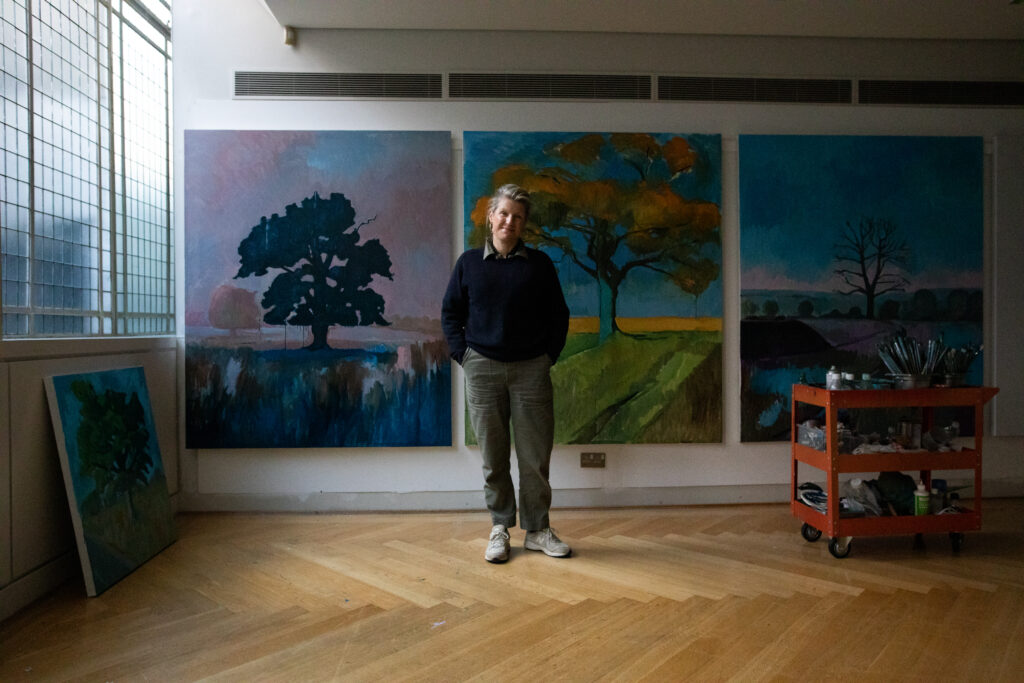
What draws you to exploring plants and nature in your work? What do they mean to you?
Nature is a huge source of inspiration for me – it represents a sense of calm, continuity, and perspective.
I put plants, trees, and natural motifs in my paintings because they ground us in something timeless. In my work I often try to “conjure an idyll”, a kind of peaceful world beyond the rush of everyday life; trying to include elements of nature, such as freshly cut flowers, leafy houseplants, or an old oak tree – it helps to create that feeling of stillness and nostalgia, and carry emotional resonance. I find it a comforting reminder that we’re part of something bigger and older, and greater than us.
Trees, especially, put our human story into perspective. They grow for hundreds of years, silently witnessing generations. In The Lost Trees, I wanted to honour how deeply people connect with them and nature as a whole – how a tree can become a keeper of memories and a member of the family, in a sense.
On a personal level, plants and nature symbolise home and happiness for me. I’m very much a gardener at heart, and I gain so much pleasure from it and the environments we create.
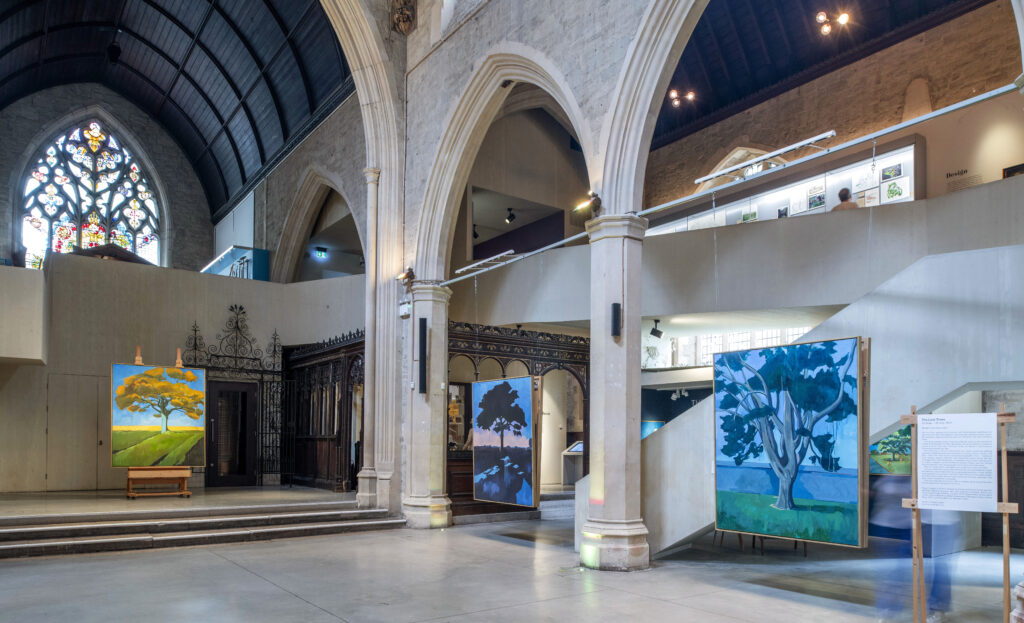
Can you tell us about your process, how do you create your paintings? Where do you find inspiration?
With having children I started to get up earlier! A day in the studio often starts with a cup (or two) of coffee, a dog walk along the Thames, and then back to it. I enjoy the private rituals we all have for the start of the day.
I work primarily in oils. I love the slowness of oil paint, how it forces you to be patient and thoughtful.
When I am working on a body of work for an exhibition, I try to have all the paintings on the go at once, and all around me, so they talk to each other in dialogue and I can find out what they need . The studio is full of studies and sketches as I try to work out the ideas.
In terms of technique, my style has evolved a lot over the years. In the beginning I worked directly from observation, but over time I’ve become more interested in painting from imagination and memory; using 20 years of observational painting as a resource. My work is still figurative, but I no longer need a model or exact scene in front of me. I now allow myself leaps in composition. I might combine a remembered scene with a dreamlike element, letting the conscious and unconscious mingle.
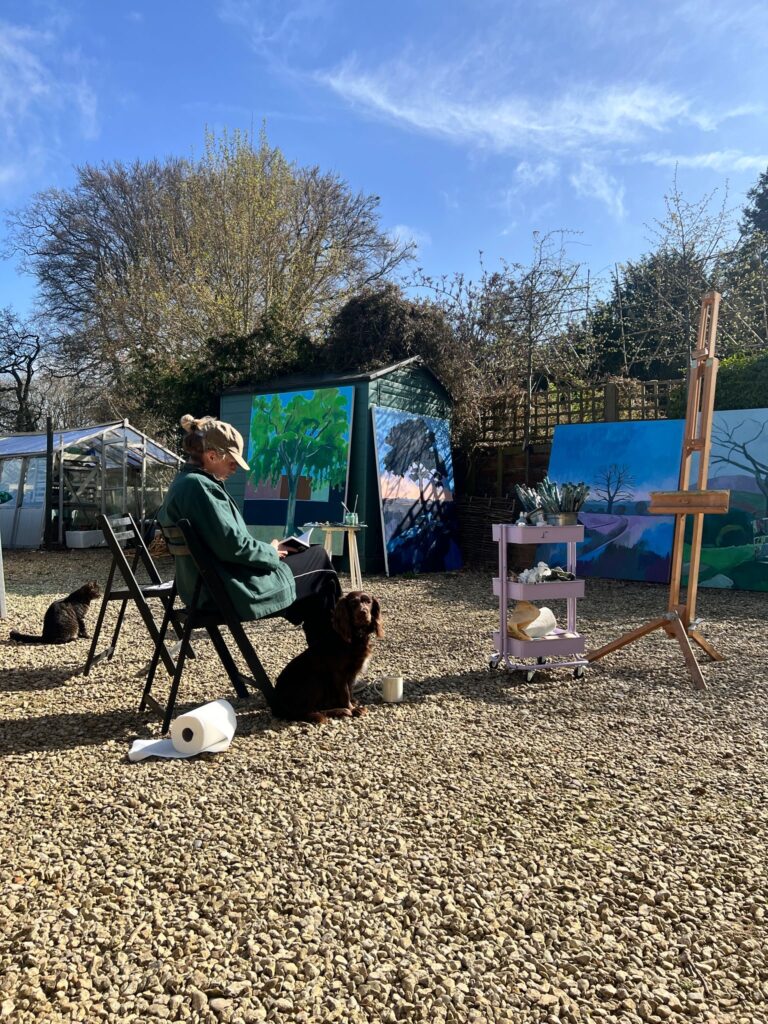
In terms of inspiration, I find it everywhere. I’m an avid reader – literature has always been one of my greatest sources. I did a series of paintings called Still Reading that were inspired by particular books I love. My Gusto exhibition in Rome, at the Keats Shelley House was commissioned to celebrate the Bicentennial of John Keats’ life and death. ‘Stanza’ on lake Como was hugely inspired by the Romantic Poets and their musings on the landscape and our response to it.
I am inspired by the everyday things around me – my show All The Good Things was about little daily moments – a steaming kettle, a fallen plant pot, a vase of daffodils – reflecting on finding the quiet, good moments when we’re surrounded by nature at home. And of course, as we’ve discussed, plants and the garden are a constant inspiration.
My process is not excessively planned or gridded out; it’s more of a dialogue with the painting. Sometimes a piece will come together quickly, sometimes it takes months!
Your Garden Museum exhibition The Lost Trees explores our personal connection with trees and collective grief in losing them. Can you tell the stories behind some of your favourite pieces in the show?
The Lost Trees is a very personal project for me, and every painting in the show carries a story. The idea for this series first took root when a number of old trees in my own neighborhood were felled to make way for the HS2 high-speed rail project. They were landmarks in our community, living things we had grown up with and loved. Witnessing my friends and neighbours’ grief and anger over losing them was a powerful moment.
One of my favorite pieces in the exhibition, Golden Oak, is actually a tribute to one of these very trees – the first tree that was shared with me by a dear friend. I wanted to capture not only the physical presence of that tree but also the sense of loss we all felt when it was gone. The trees here are just as much about the people who told me their memories of that oak as it is about the tree itself.
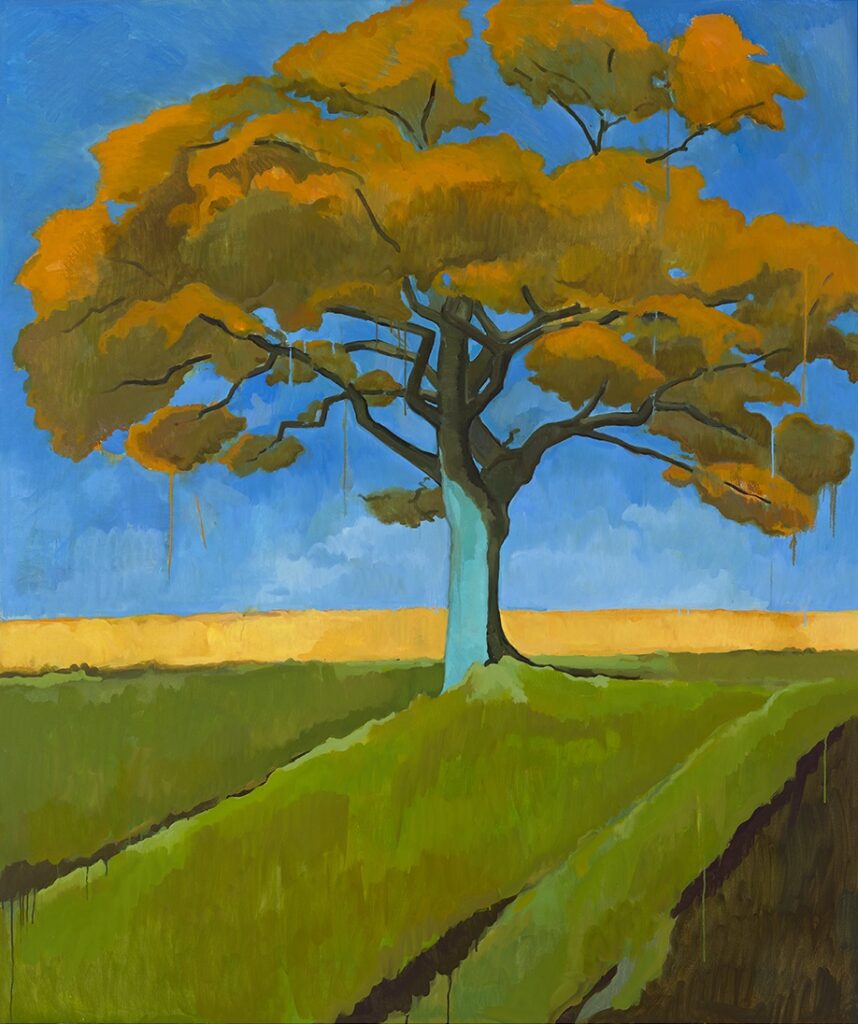
Another piece that is very special to me is one inspired by the Sycamore Gap tree up in Northumberland. That tree by Hadrian’s Wall was iconic as a gorgeous lone sycamore in the dip of a hill, featured in films and beloved by so many. When it was senselessly cut down in 2023, there was a nationwide outpouring of grief. It’s incredible how a single tree can evoke such collective feeling.
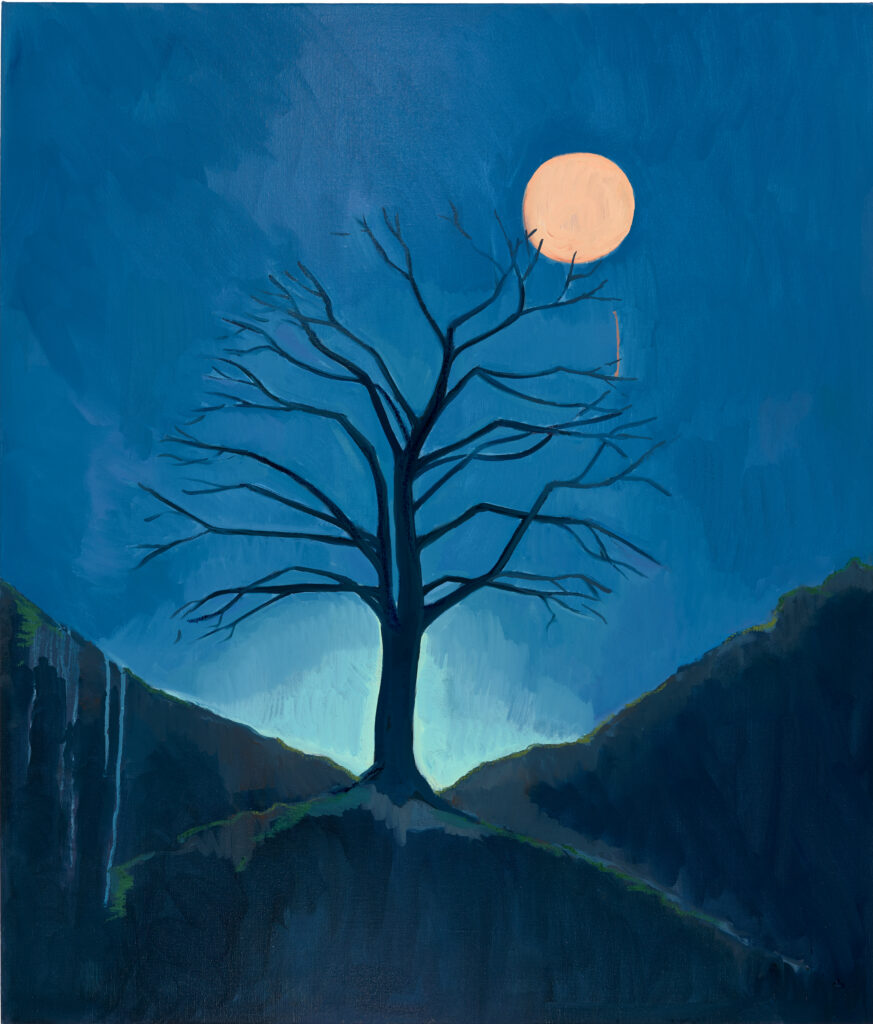
Each painting in The Lost Trees has a unique backstory. I gathered anecdotes from people – some trees were from private gardens, some from public parks or ancient hedgerows – and each was felled for different reasons
One was lost to disease, another to a big storm, several to new construction.
Alongside the works, we compiled a book of personal stories and quotes about lost trees – from writers, campaigners and witnesses. It’s full of memories of specific trees that meant something to someone.
Do you have any favourite gardens to visit or places to immerse yourself in nature?
I love to visit gardens, and love walking in the hills. I am lucky enough to spend time on Lake Como, Italy where we hike up the mountains and enjoy the meadows at the top, and swim in the lake. It is a huge source of inspiration and calm for me.
Closer to home, I feel very lucky to live close to many amazing gardens. And during Covid collaborated with the Land Gardeners on their book Soil to Table, making paintings for it.
Of course I have to mention that I enjoy my own garden and vegetable patch very much. It’s not grand or famous, but being in the garden is one of my favorite ways to forget whatever it is I am worrying about, and remind myself to keep observing the world around me.
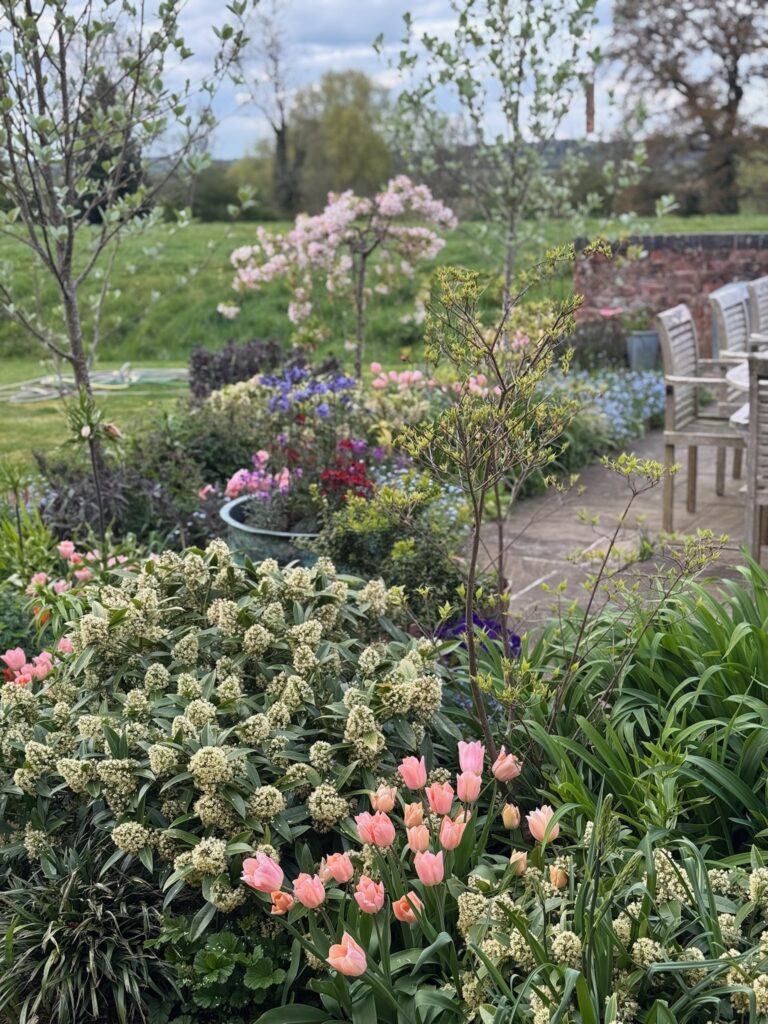
Finally, as we are the Garden Museum, can you tell us about your own relationship with plants, gardening and nature?
My relationship with plants and gardening is incredibly personal and joyful. I’ve been a plant lover and a gardener for as long as I can remember. I won first prize in gardening at school when I was a child, as I tended lots of these little 1m plots we were each given . That early love of gardening has stayed with me through adulthood. I always associated kind people, with people who love gardens and work with them.
Gardening, to me, is a source of solace and creativity. When I need a break from painting, or have hit a conundrum , I’ll go pull weeds or deadhead flowers. I find that tending to plants is meditative. You have to be patient and nurturing, slow down and take care, and these are all wonderful things.
My relationship with plants is one of deep affection and respect, and just always reminds me how connected we all are, and how we really so often miss the point with being so busy in our minds – when really we just need to get outside and be with the trees.
—
Nancy Cadogan: The Lost Trees is open until 20 July, free entry
For more stories like this, sign up to the Garden Museum newsletter
